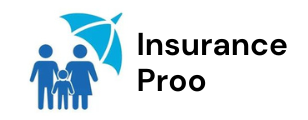The Impact of a Car Accident on Your Insurance Premiums

Car accidents can have significant outcomes not only for the individuals involved but also for their insurance premiums. Understanding how a car accident affects your insurance rates is pivotam for drivers who want to maintain affordable coverage. This article may explores the various factors that influence insurance premiums after an accident, the types of coverage affected and the strategies for managing potential increases.
Understanding Insurance Premiums is as follows

These Insurance premiums are the amounts paid periodically to an insurance company for coverage. These premiums are influenced by several factors which are including fhe driver’s history, the type of vehicle, location, and the coverage selected. When a driver is involved in a car accident where especially one where they are at fault, it can lead to a survey their risk profile by the insurance company which results in increased premiums.
Factors Influencing Premium Increases are as follows

- At-Fault Accidents: If you are found at fault in a car accident where your insurance company will likely increase your premiums. This is because insurers view at-fault accidents as an indicator of higher risks. The severity of these ar accident and the costs sustain can further influence the extent of the increase.
- Claim Amount: The amount paid out by the insurance company for the claim can also impact your premiums. Larger claims typically lead to higher premium increases. For example, if the car accident resulted in significant property damage or medical expenditures, the insurer may raise your rates significantly.
Driving Record: Clean driving records can alleviate the impact of an accident on your premiums. Vice-Versa , if you have multiple incidents or claims, your insurance company may categorize you as a high-risk driver which may leads to more significant increases.
State Regulations: These Different states have varying regulations regarding how accidents affect insurance premiums. Some states have laws that limit how much an insurer can raise premiums after an accident, while other allows for more flexibility.
Insurance Company Policies: Each insurance company has its own policies regarding premium increases after accidents. Some may offer accident forgiveness programs, which prevent your first accident from affecting your rates. It’s essential to review your policies and discuss options with your insurers.
Types of Coverage Affected are as follows

- Liability Coverages: These are the most common type of coverage affected by an car accidents. If you are found at fault, your liability coverage will cover the costs of damages to the other party, and also your premiums may increase as a results.
Collision Coverage: If you file claims under your collision coverage for damages to your vehicle, this can also lead to an increase in your premiums. The more claims you file, the higher the likelihood of a premium hike.
Comprehensive Coverage: While thorough coverage is typically for non collision-related incidents (like theft or natural disasters), where if you have multiple claims across different coverage types since it can still impact your overall premiums.
Uninsured/Underinsured Motorist Coverages: If you are involved in an car accident with a driver who lacks adequate insurance, and you file a claim under this coverage as it may also affect your premiums after especially if you have a history of claims.
Managing Premium Increases are as follows

- Shop Around For New Insurance Quotes: After an accident shat it’s clever to shop around for new insurance quotes. These Different companies may assess risk differently, and also it you may find a more favorable rate elsewhere.
- Consider Higher Deductibles: Opting for a higher deductible can lower your premiums. However, this means you will pay more out of pocket in the event of a claim where so it’s essential to weigh the pros and cons.
Take Defensive Driving Courses: Completing defensive driving Courses can sometimes qualify you for discounts as which may help counterbalance premium increases.
Maintain Clean Driving Records: After an accident, focus on maintaining clean driving records. Safe driving habits can help improve your risk profile over time, which potentially leads to lower premiums in the future.
Review Your Coverage Needs: After an accident is met s it may be a good time to review your coverage. You might find shat you can adjust your policies to better fit your current needs and budgets.
Factors Affecting Premium Amount are as follows

- Type of Coverage: The Different types of insurance (e.g., life, health, car) have different premiums.
Coverage Amounts: Higher coverage amounts generally mean higher premiums.
Risk Profiles: Factors like age, health, driving record, and the likelihood of making claims can affect the premiums.
Location: Premiums may vary based on geographic locations.
Claims History: Past claims that can influence future premiums.
Types of Insurance and Premiums are as follows

- Life Insurance: Those Premiums are influenced by age, health, coverage amount, and smoking/alcohol use.
Health Insurance: Those Premiums depend on factors like age, health conditions, coverage level, and location.
Car Insurance: Premiums are affected by factors likewise driving records, type of cars, and locations.
Home Insurance: Those Premiums can be influenced by location, the type of property, and the risk of damage.
Payment Frequency in Details as follows: Those Premiums can be paid Monthly, Quarterly, Semi-Annually, or annually. Some policies allow for Lump-Sum Payments, particularly if you are found at fault. Understanding the factors that influence these increases, the types of coverage affected, and strategies for managing costs are essential for all drivers. By taking charge and being informed that you can navigate the complexities of insurance premiums and maintain affordable coverage even after an accident. Always remember to communicate with your insurance providers to explore options that may temper he financial impact of an accident on your premiums.
Final Interpretations after the deeper analysis of the Subject are as follows
Car accidents can have a lasting impact on your insurance premiums. An Insurance Premium is the amount of money paid by an individual or business to an insurance company for coverage under a policy. It’s essentially the cost of the insurance. The premium amount depends on various factors are including the type of coverage, the amount of coverage, a nd the risk profiles of the insured. I hope you find this Information Useful.











